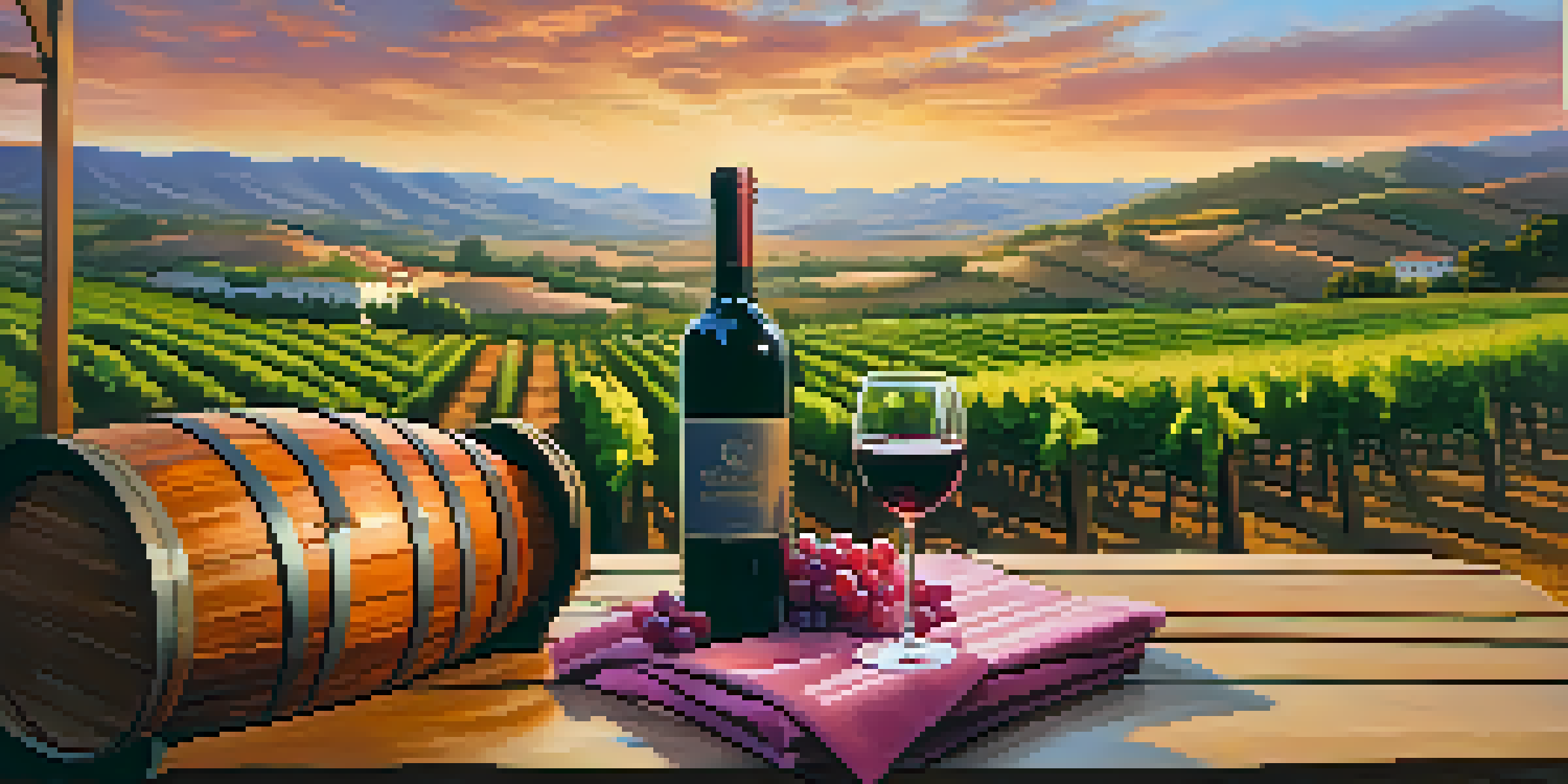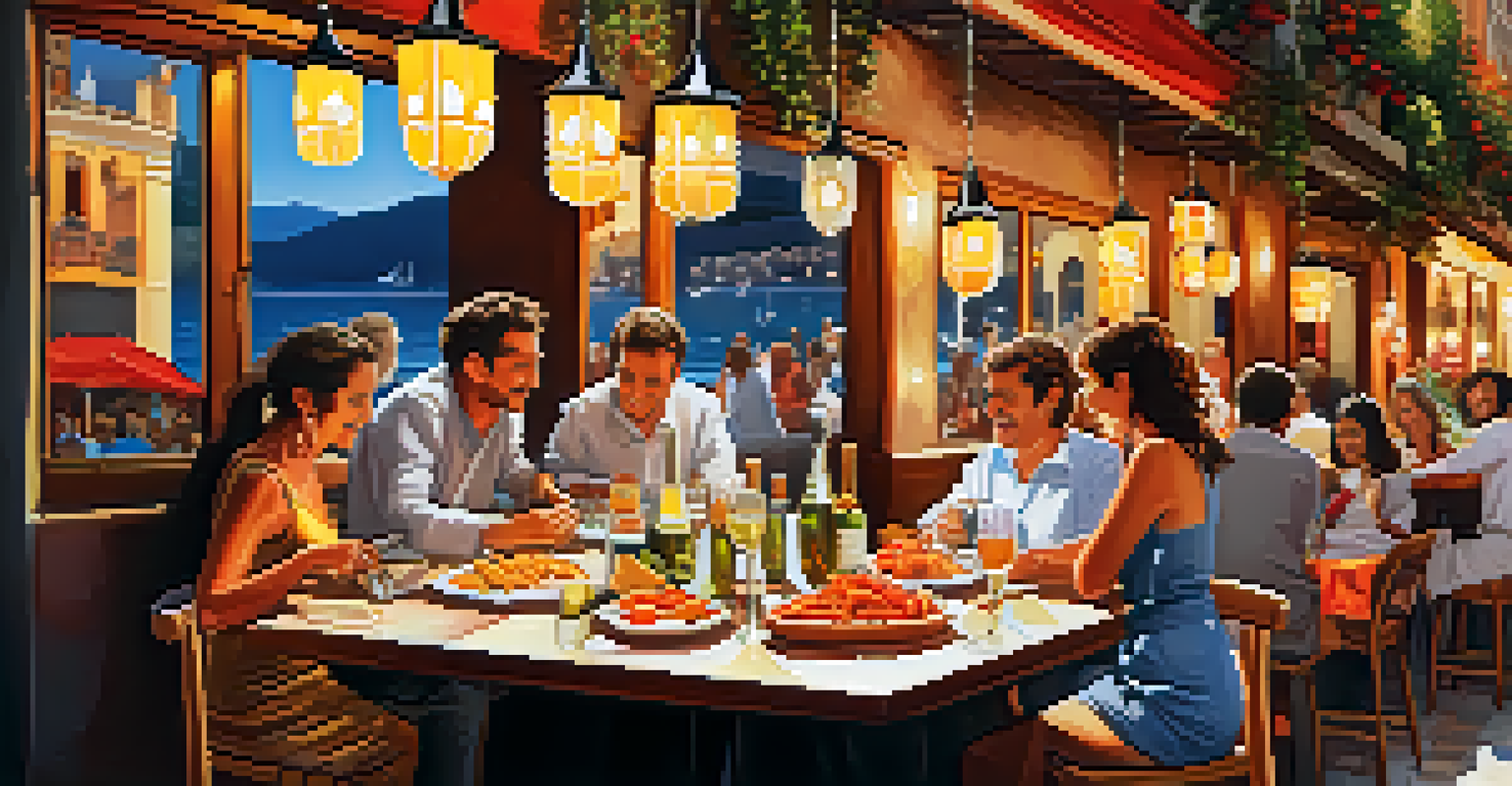Explore Spanish Wines: Tasting Tours and Classes Offered

Introduction to the World of Spanish Wines
Spain is renowned for its diverse and vibrant wine culture, offering a rich tapestry of flavors and styles. From the sun-drenched vineyards of Rioja to the coastal regions of Rías Baixas, each area boasts unique characteristics that make its wines special. Exploring Spanish wines is not just about tasting; it's about immersing yourself in the history, geography, and traditions that shape each bottle.
Wine is sunlight, held together by water.
Whether you're a seasoned sommelier or a casual wine drinker, there's always something new to learn about Spanish wines. The variety of grapes, such as Tempranillo, Garnacha, and Albariño, each contribute distinct flavors and aromas. This diversity invites exploration and makes tasting Spanish wines an exciting adventure.
Many wine enthusiasts find that attending tasting tours and classes allows them to deepen their appreciation for these exquisite wines. These experiences often combine education with enjoyment, ensuring that every sip is savored with a richer context.
Popular Regions for Spanish Wine Tours
Spain is home to numerous wine regions, each offering unique tours that highlight their local specialties. For example, the Rioja region is famous for its robust red wines and picturesque vineyards. Visitors can partake in vineyard tours, where they learn about the winemaking process while tasting exceptional wines right at their source.

Another notable region is Priorat, known for its bold and complex wines. Here, tours often include visits to historic wineries nestled in stunning landscapes, providing both a visual and sensory feast. The experience allows tourists to connect with local winemakers and understand the influence of the region's geology and climate on the wines they produce.
Discover Spain's Wine Regions
Spain's diverse wine regions, such as Rioja and Rías Baixas, offer unique tasting experiences that highlight local specialties.
In contrast, the coastal region of Rías Baixas focuses on refreshing white wines, particularly Albariño. Tasting tours in this area often feature seafood pairings, showcasing how the local cuisine complements these wines beautifully. Each region offers its own flavor journey, making Spanish wine tours a fantastic way to explore the country's cultural richness.
Wine Tasting Classes: What to Expect
Participating in a wine tasting class can be an enlightening experience for anyone interested in expanding their wine knowledge. These classes typically cover the fundamentals of wine tasting, including how to evaluate the appearance, aroma, and taste of various wines. It's an engaging way to learn about the nuances that make Spanish wines stand out.
In wine, there is truth.
Instructors often share insights into the history and traditions behind each wine, adding depth to the tasting experience. Classes may also include guided tastings of several wines, allowing participants to compare different grape varieties and styles side by side. This hands-on approach helps to demystify wine tasting, making it accessible to everyone, regardless of their prior knowledge.
Moreover, many classes also incorporate food pairings, enhancing the overall enjoyment of the wines. Learning how to pair Spanish wines with local dishes not only enriches the tasting experience but also equips participants with practical skills they can use at home.
Cultural Experiences During Wine Tours
Spanish wine tours often extend beyond just the wine itself, immersing visitors in the local culture. Many tours include stops at historical sites or local markets, allowing guests to experience the lifestyle and traditions of the region. This cultural immersion enhances the understanding of how wine fits into the broader Spanish way of life.
For instance, in regions like Catalonia, tours may include visits to traditional tapas bars, where participants can enjoy local delicacies alongside their wines. This not only complements the tasting experience but also provides insight into the culinary traditions that accompany Spanish wines. Food and wine are intertwined in Spanish culture, and understanding this relationship deepens the enjoyment of both.
Engaging Wine Tasting Classes
Wine tasting classes provide an accessible way to learn about Spanish wines, covering evaluation techniques and food pairings.
Additionally, some tours offer opportunities to meet local artisans or farmers, providing a glimpse into the hard work and passion that goes into winemaking. These personal connections create memorable experiences that resonate long after the tour ends.
Choosing the Right Tour or Class for You
With so many options available, choosing the right wine tour or class can feel overwhelming. Consider what aspects of Spanish wine interest you most: Are you eager to learn about specific regions, or do you want to focus on particular wine styles? Identifying your preferences can help narrow down the choices and lead to a more fulfilling experience.
It’s also helpful to read reviews or seek recommendations from fellow wine enthusiasts. Many wine tour companies provide detailed descriptions of their offerings, including itineraries and pricing. This transparency allows you to select a tour or class that fits your budget and interest level.
Lastly, don't forget to consider the size of the group. Smaller groups often provide a more intimate setting, allowing for personalized attention and deeper discussions. Whatever you choose, make sure it aligns with your passion for learning and exploration.
Benefits of Wine Tasting Experiences
Engaging in wine tasting experiences offers a multitude of benefits beyond just enjoying delicious wines. Firstly, it enhances your appreciation for the craftsmanship behind winemaking, transforming the way you view every bottle. Understanding the intricacies of production can turn a casual drink into a moment of celebration.
Additionally, wine tasting classes and tours create opportunities for socializing and meeting fellow wine lovers. Sharing the experience with like-minded individuals can lead to lasting friendships and shared discoveries. Wine has a unique way of bringing people together, creating connections that enrich the experience.
Cultural Immersion in Wine Tours
Wine tours often include cultural experiences, allowing visitors to explore local traditions, cuisine, and the artistry behind winemaking.
Finally, these experiences can also inspire confidence in your wine selection skills. With newfound knowledge, you’ll feel more empowered to choose wines that suit your palate, whether at a restaurant or during a gathering with friends. The joy of exploring Spanish wines can truly transform your approach to wine appreciation.
Conclusion: Embrace the Spanish Wine Journey
Embarking on a journey through Spanish wines is an adventure filled with flavors, stories, and cultural richness. From the scenic vineyards to the vibrant tasting classes, each experience offers a unique window into the heart of Spain. Whether you’re a novice or an aficionado, there’s always something new to discover and savor.
As you explore different wine regions and indulge in the local cuisine, you’ll gain a deeper appreciation for the artistry involved in winemaking. This journey is not just about drinking wine; it’s about experiencing the passion and dedication of those who bring these exquisite flavors to life.

So, gather your friends or embark on a solo adventure and dive into the world of Spanish wines. With every sip, you’ll be transported to the sun-soaked vineyards of Spain, creating memories that will last a lifetime.